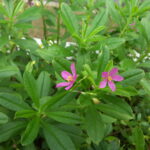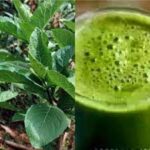So a friend of mine from a popular royal household sent me the picture of this plant and asked if I knew about it. That sparked my interest in this magical plant. I had to do my research and reach out to scientists in the field of natural medicine, botany and biochemistry. Before you get to the juicy part, let’s start from the beginning of the story of this plant.
The copperleaf plant, also known as Jacob’s coat, is an evergreen tropical and subtropical plant which grows naturally in Vanuatu and occurs in the Pacific Islands. Many people have seen it used as flowers or grasses in the wild. This hairy and colorful herb is one plant you could not resist taking another look at.


Scientific Classification of the Copperleaf Plant
| Kingdom: | Plantae |
| Clade: | Tracheophytes |
| Clade: | Angiosperms |
| Clade: | Eudicots |
| Clade: | Rosids |
| Order: | Malpighiales |
| Family: | Euphorbiaceae |
| Genus: | Acalypha |
| Species: |
A. wilkesiana
|
| Binomial name | |
|---|---|
| Acalypha wilkesiana
src: WIikipedia |
|
Features of Copperleaf
It has a closely arranged crown, with an erect stem and many branches. Both the branches and the leaves are covered in fine hairs. The leaves, which may be flat or crinkled, are large and broad with teeth around the edge. They can be 10–20 centimetres (3.9–7.9 in) long and 15 centimetres (5.9 in) wide. The leaves are coppery green with red splashes, giving them a mottled appearance. Separate male and female flowers appear on the same plant. The male flowers are in long spikes which hang downwards while the female flowers are in short spikes. The latter do not show up easily as they are often hidden among the leaves. The flower stalks are 10–20 cm long.
This plant has foliage that is more colourful than many flowers. Other names for Acalypha wilkesiana include A. amentacea and A. tricolor.
Medical facts and uses of copperleaf plant
-The plant is abortifacient, antibacterial, antifungal, antimicrobial and antinematodal
-The leaves are squeezed into water and the resulting juice is drunk as a treatment for diarrhoea and dysentery
-The juice of fresh leaves is drunk as a treatment for laryngitis
-They are chewed on as a first-aid treatment for a ruptured appendix[481
-The fresh shoots are squeezed into water and the solution drunk to regulate menstruation and as an abortifacient (Presumably this last treatment is a much stronger juice than that used for diarrhoea.)
-Applied externally, the leaves and young shoots are used to treat skin rashes
-The leaves are boiled in water and used as a massage for patients with fevers
-The fresh, leafy branches are applied externally in order to induce perspiration, apparently for their rubefacient effect
-The fresh young leaves, combined with the leaves of Ocimum basilicum, Hibiscus rosa-sinensis and Euodia hortensis, are placed in a bowl of hot water and the vapour released is breathed in to bring relief from pneumonia, malaria, pain and fever
-An infusion of the leaves and bark is drunk as a treatment for pleurisy
How to propagate copperleaf plant (Video)
Diseases of copperleaf plant
The plant is susceptible to mealy bug infection, which can result in growth retardation and also cause high fungal contaminations in in vitro studies. To reduce the mealy bug’s infection, 90% ethanol can be directly applied to the infestations using paint brushes.





